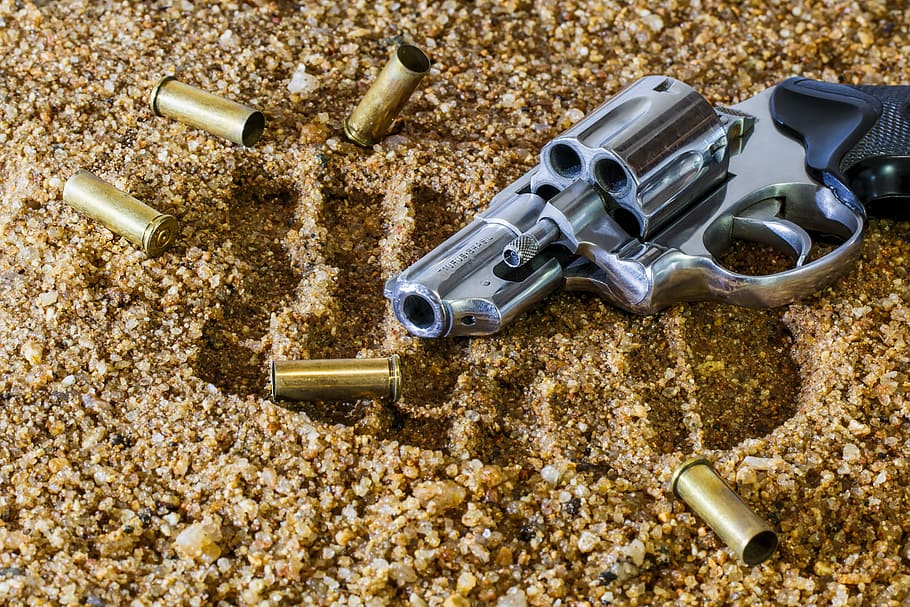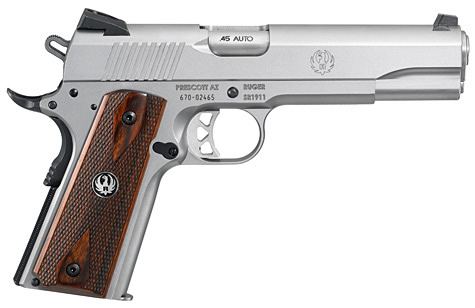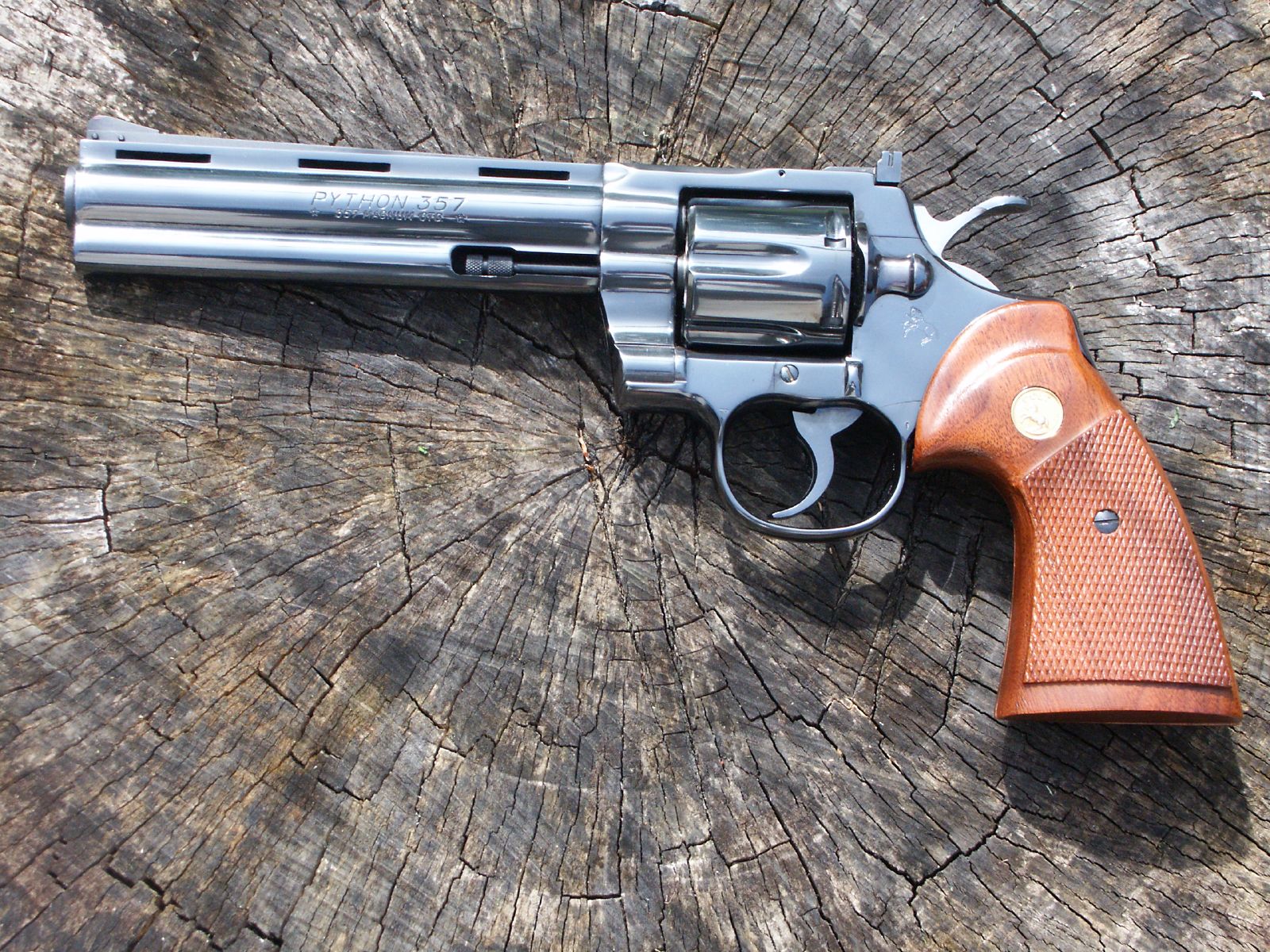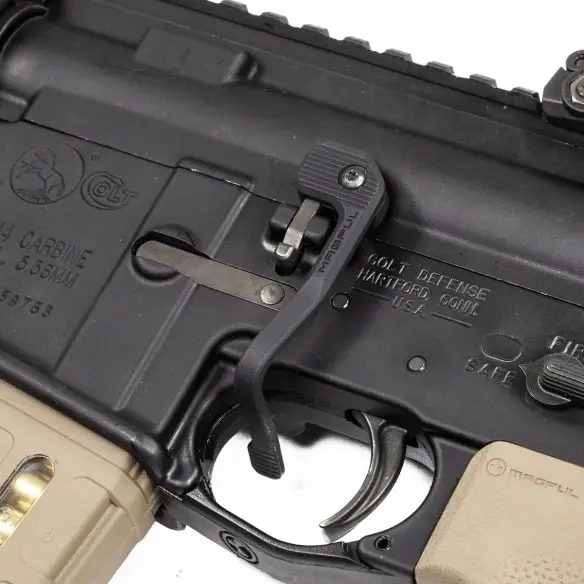For the last fifty years, gun manufacturers have been required to give each firearm a unique identifier known as a serial number. Knowing where to look for this identifier on different models of guns is essential, especially when buying firearms from private parties or inheriting guns. The serial number can tell you the date and location of the gun’s manufacturing and indicate whether or not the gun is stolen. Buying a stolen gun can get you in serious trouble, so it’s important to check this information if you’re skeptical about the private party you’re dealing with.
The serial number will be in a convenient location: the butt or frame of a revolver, the frame or slide on a semi-automatic pistol, the action side of a rifle, the bottom or action side of a pump-action or semi-auto shotgun, or the action flat of a break-action shotgun.
This applies to all firearms manufactured in or imported to the United States since 1968.
A responsible gun owner would be wise to understand why these serial numbers are required by law and what can be done with them. In this article, we will cover the history of serial number requirements and modern-day examples of how they’re used (fully updated for 2023).
Why Do Guns Have Serial Numbers?

While it was common practice for some manufacturers, the legal requirement to mark all produced firearms with a unique serial number was put into effect on October 22nd, 1968, with the Gun Control Act (GCA). With other regulations—such as the creation of the Federal Firearms License system—and further amendments, the GCA made it a legal requirement that all newly manufactured firearms include the following markings:
Serial Number Requirements For Firearms
Serial Number
- Must be conspicuously engraved, cast or stamped (impressed) on the firearm frame or receiver.
- The serial number cannot duplicate the serial number appearing on any other firearm the importer previously imported.
- For firearms imported after January 30, 2002, the engraving, casting or stamping (impressing) of the serial number must be to a minimum depth of .003 inch and in a print size no smaller than 1/16 inch.
Name of Manufacturer
- Must be conspicuously engraved, cast or stamped (impressed) on the firearm frame, receiver, barrel or slide
- For firearms imported after January 30, 2002, the engraving, casting or stamping (impressing) of the serial number must be to a minimum depth of .003 inch
Country of Origin
- Must be conspicuously engraved, cast or stamped (impressed) on the firearm frame, receiver, barrel or slide
- For firearms imported after January 30, 2002, the engraving, casting or stamping (impressing) of the country of origin must be to a minimum depth of .003 inch
Model Designation (if assigned)
- Must be conspicuously engraved, cast or stamped (impressed) on the firearm frame, receiver, barrel or slide
- For firearms imported after January 30, 2002, the engraving, casting or stamping (impressing) of the model designation must be to a minimum depth of .003 inch
Caliber or Gauge
- Must be conspicuously engraved, cast or stamped (impressed) on the firearm frame, receiver, barrel or slide
- For firearms imported after January 30, 2002, the engraving, casting or stamping (impressing) of the caliber or gauge must be to a minimum depth of .003 inch
Gun Serial Number Requirements

There are no uniform requirements for the serial number itself. Numbers and letters can be used in relatively any length and configuration, with the only requirements being that it be properly cast, engraved, or stamped on the firearm and that it be unique.
For example, a serial number on a Browning gun could have anywhere from 8-10 characters, while a Glock could have only 5 characters. A 1911 pistol serial number is a series of numbers only, while Smith & Wesson commonly uses letters and numbers together.
As listed above, the serial number is not the only marking required. Caliber must be marked on the gun to reduce the likelihood of misloading the firearm. The manufacturer’s name must also be present on the gun, as well as the country of origin. Some manufacturers will even list the city and state; the Smith & Wesson M2.0 is proudly marked with ‘Springfield, MA U.S.A’.
As of 2002, there are additional requirements to avoid deterioration and defacing of the serial number. The engraving of most markings, including the serial number, must meet a minimum print size of 1/16 ” and a minimum depth of .003″.
Gun Serial Numbers by Type
While there is no true standardization, it is common for certain styles of guns to have similar serial number placements. Even more common is for a manufacturer to put the serial number in the same place on all of its guns of a particular style.
Each type of gun will have a few obvious places to check, and a few not-so-obvious places to check. Below is a breakdown of common serial number placements for different types of guns.
Semi-Automatic Pistols

The serial number on a semi-automatic pistol will generally be located on the lower receiver or frame of the weapon, generally right below the slide. A notable exception is the Glock 19, which has the serial number on the frame as well as on the barrel and the slide, a common practice in Europe.
On a Sig Sauer P365, the serial number is found on the frame slightly behind and above the trigger, engraved with a silver backdrop in contrast to the rest of the gun. On Smith & Wesson M&P 2.0 and Shield models, the serial number can be found on the receiver further forward towards the muzzle.
As a general, check both sides of your pistol’s frame for a serial number. If nothing turns up, check the butt of the gun and under the grips. Also, check the slide, looking in any indents and crevices in the gun’s design for numbers or markings.
Revolvers

The serial number on revolvers can usually be found on the butt or the frame of the revolver and may be located under the grips. The Smith & Wesson Model 19, for instance, requires that you remove the grips to get to the serial number printed on the butt plate, though it can also be found on the frame.
A Colt Python will have the serial number on the frame, in front of the cylinder in the crane area. Early models of this gun may have a serial number of just three digits and are quite valuable. A Ruger Blackhawk will have the serial number printed directly below the cylinder on the frame.
It’s safe to assume that the serial number will be found somewhere on the frame around the cylinder, or on the butt— remember to check under the grips!
Rifles

On a Remington Model 700, the serial number can be found where the barrel meets the receiver. If it’s a right-handed gun, it will be on the left side, and vice-versa.
On a Browning X-Bolt, along with many other bolt-action rifles, the serial number is found on the action side of the receiver. The AR-15, by contrast, will have the serial number on the lower receiver. This is because the lower receiver of an AR-15 is the part that is actually considered the firearm.
Most traditional rifles, whether bolt-action, pump-action, or lever-action, will have the serial number stamped or engraved somewhere on the action side of the rifle. If you don’t see the serial number, check the underside of the rifle.
Shotguns

A Mossberg 500 will have the serial number on the left side of the receiver, just behind the trigger. The same goes for the very similar Maverick Model 88.
Similarly, the popular Remington 870 will have the serial number on the left side and right above the trigger. The Remington 700 and 1100 shotguns will have the serial numbers in the same place.
The marking locations for semi-automatic and pump-action shotguns are usually the same or similar, but break-action shotguns will generally have a unique placement. The action flat, or “water table”, is the part of the shotgun that becomes visible when the action is open and generally has the serial number markings.
But not all break-action shotguns have the same serial number placements; for example, the Beretta DT11 has the serial number marked on the top, near the safety.

What Caused the Need for Gun Serial Numbers
The Gun Control Act was initially proposed in response to the assassination of President John F. Kennedy in 1963. One of the goals of the GCA was to prohibit the purchase of firearms through mail-in magazine platforms, as the rifle that was used in the assassination was bought in this way through the magazine American Rifleman.
While everybody, including the NRA, seemed to be in favor of prohibiting mail-in gun purchases, the law was not passed until 1968. This was after a society-wide shift in gun ownership interest as a result of the assassinations of Martin Luther King, Jr. and Robert F. Kennedy.
The Gun Control Act was finally accepted as law on October 22nd, 1968 by President Lyndon B. Johnson, which then was amended by The Brady Handgun Violence Prevention Act and remains today.
What a Gun’s Serial Number Can Be Used For
By finding a gun’s serial number and referencing the manufacturer’s website, you may be able to unlock additional information about the weapon. If there’s no serial number searching option on the website, you can give them a call and get additional information about the gun.
Guns made before 2002 may lack details such as country of manufacture or even the correct caliber, as these were not required. This can be especially useful for long guns manufactured between 1970 and 2002 that may have been passed down or gifted.
Beyond this, there are two very common uses for the serial number:
Private Sales: In order to legally sell and transfer a modern firearm to another person, you need to have a valid serial number. As a buyer, you need to ensure the serial number is legible.
Dating the Gun: You can usually obtain the age of a used, older gun by searching part of the serial number against the manufacturer’s database. By dating a gun in this way, you may gain insight into the value and collectability of the firearm.
Proof of Ownership

The serial number of a firearm can be compared to the title of a car. It serves as proof that you, and only you, are the owner of this property.
Furthermore, because a firearm is legally registered to your name, you are responsible for the number associated with that weapon. This means keeping the number private, as it is not generally recommended to share your serial number with others unless in a buying or selling situation, or with an authorized party.
Because you are responsible for that weapon, you should have the number recorded somewhere in the event of your gun being stolen. Reporting this number to the appropriate authorities could help you get out of some serious trouble down the line, should that weapon be used in any sort of criminal activity.
Is a Gun Without a Serial Number Illegal?
No, and yes. Prior to 1968, there were no requirements for serial numbers just yet, so these antiques are perfectly legal to own provided you are not barred from owning firearms. It is also not federally illegal to make your own firearms, and this is allowed in many states with certain restrictions. These homemade firearms also do not require serial numbers but can also not be sold or transferred.
A gun that is manufactured with a serial number in accordance with the GCA cannot have the serial number removed legally. It is illegal to deface, remove, or otherwise alter a gun’s serial number, and it is also illegal to own a gun that has been tampered with in this way. In other words, if you own a firearm that was made with a serial number, but you can’t read the serial number, it is a felony crime. Don’t put yourself in this position.
Is There a Database of Gun Serial Numbers?

There is no national, centralized database of who owns what guns. When law enforcement discovers a gun that may have been used in a crime, they can request information on the weapon from the National Tracing Center (NTC), via the Bureau of Alcohol, Tobacco, Firearms, and Explosives (ATF).
The NTC is responsible for collecting and organizing records of firearms purchases from licensed dealers in the United States. The organization deals with around 370,000 requests per year; it is a relatively small staff that handles a large volume of requests.
The NTC operates primarily with paper documents and non-searchable computer files. Under federal law, it is illegal to create a searchable national database of firearms owners and associated serial numbers.
E-Trace
The ATF is the sole federal agency authorized to trace firearms. However, it will only trace firearms for law enforcement actively investigating a crime.
This is where E-Trace comes in. Eligible law enforcement can operate an E-Trace account and perform comprehensive traces of recovered weapons. What E-Trace actually does is allow law enforcement to submit and monitor a trace request from the National Tracing Center, where they search the same paper documents and non-searchable PDFs as they would if the ATF called in a trace request.
How to Check if a Gun is Stolen

While there is no searchable, centralized database of legally owned gun serial numbers, there is a database of stolen serial numbers. The problem is, it isn’t as easy as a Google search.
When a gun is stolen it should be reported to the police, and – provided the owner has a copy of the serial number – the gun’s unique identifier will be eventually reported to the FBI’s National Crime Information Center.
Only law enforcement officials have the ability to request a search of this database. You can request your local police department get involved and check to see if the serial number of your gun is stolen, but be aware; they will have to confiscate the weapon if it is.
Also, keep in mind that they may not accept this request. It depends on who you get to speak with. Unfortunately, the friendly folk down at the gun shop cannot look up the gun’s serial number for you (even though many wish they could).
There have been attempts at creating a privately owned database of stolen guns. One such site is hotgunz.com. This allows users to voluntarily report their stolen weapons in an attempt to create a reliable database. It may be worth checking, but probably won’t be the most reliable.
Some states have their own database of stolen firearms reports. Florida and Ohio are good examples of this, and you should check with your state to see if they have any resources in place. Regardless of what resources your state provides, the FBI’s National Crime Information Center and their inquiry with the NTC is the only truly reliable way to check a firearm’s full history.
What Happens if a Gun is Stolen?
If a gun is stolen or lost and is recovered by law enforcement, in many cases the gun will be returned to the owner. However, if the weapon was used in a crime, it will most likely be kept as evidence.
Regardless, you should take every necessary precaution to ensure that your gun is not misplaced. This means owning a gun safe, or another appropriate locking container. This is responsible gun ownership 101. If your firearm is misplaced, the best thing you can do is have a copy of your serial number and report the gun stolen to your local police department and take the necessary follow-up steps they provide you with.
Taking these steps will put you on the best possible course to getting your gun back, and the least likely course to getting in some serious trouble.
If you purchase a stolen gun, the police could come looking for it. They could confiscate the gun and leave you nothing in return, so you want to be sure that the gun you are interested in is 100% legitimate.
Other Ways to Get a Gun’s Serial Number

It is a good idea to record the serial numbers of your firearms. If the worst case occurs before you have a chance to record and organize your serial numbers, there are a few ways you may still be able to recover them.
Your gun’s manual will often have the serial number listed. This could serve as a valuable backup if you were to lose your weapon. Check with the FFL dealer you purchased your weapon through (if you bought it at a shop). They are required to report this information periodically, so if you show the proper identification, you should be able to obtain the serial number of the gun.
The serial number may also be listed on the original receipt of purchase from your Federal Firearms License (FFL), as well as the box that the gun came in when you purchased it. Besides having these as a backup, they will also come in handy if you try to sell the gun. All around, it’s just good practice to hold onto them.
Conclusion
Knowing how to locate and record the serial number of your gun is fundamental to gun ownership. By taking this simple precaution, you can create organized records of the what, when, and where of your firearm collection. Remember, since the NTC relies on paper records that may not always be accurate, you need to keep yourself covered by keeping your records.
When buying a firearm, check the serial number. If you’re skeptical, try to call the police and see if they can check the gun for you. If not, at least ensure that the serial number is legible—and definitely not scratched off. And remember, if there is no serial number, research the age of the gun. It may be old enough to be exempt, and you may be in the clear to pull the trigger on that beautiful antique rifle.
OUR RECOMMENDED TACTICAL GEAR LIST:
- Best Health and Fitness Tracker, Whoop. Get 1 Month Free: See it here!
- EDC Assisted Opening knife we can’t live without: See it here!
- Best EDC Concealed Carry Pistol: See it here!
- Extreme Performance Morning Dink: See it here!
- Best 3D Printer For Gun Parts and Accessories: See it here!
- Our Top Rated EDC Flashlight: See it here!
- AR Red Dot Sight We Can’t Live Without: See it here!
- Best Handgun Safe For Quick Access: See it here!
- Top Wireless Security Camera For Home Security: See it here!
- The Range Bag You’ve Always Been Looking For: See it here!
- CIA Approved Sharp Shooting Course: See it here!

